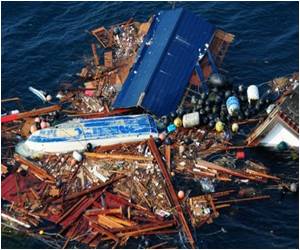Trees all along a coast need not necessarily protect it against a tsunami fury. In fact, planting alien trees along exposed coastlines will do more harm than good, by destroying local ecosystems, displacing people and taking money away from more effective coastal defence projects, say Australian scientists. The warning comes on the fifth anniversary of the catastrophic Indian Ocean Tsunami.
In the wake of the tsunami that struck on December 26 2004, it was widely claimed by many conservation organizations and some scientists that coastal vegetation could reduce the damage caused by tsunamis.These claims led to large scale efforts to plant belts of foreign trees along exposed coasts in the hope of protecting people from future tsunamis or from storm surges produced during tropical storms, such as Hurricane Katrina or Cyclone Nargis.
However, after reviewing over 30 papers on the subject, the researchers from Australia, Bangladesh, Belgium, France, Guam, India, Sri Lanka and the USA conclude that most of the original claims were false.
“There is very little evidence for the idea that coastal vegetation provides meaningful protection from these major surge events. Also, planting introduced, foreign tree species as ‘bioshields’ is doing extraordinary environmental damage” says the lead author of the paper, Dr Rusty Feagin of Texas A & M University.
“Even more extraordinarily, local topography, such as sand dunes, which CAN provide protection against surges, are being bulldozed to make way for ‘bioshields’ of exotic species.” says Dr Kartik Shanker of the Indian Institute of Science.
Spending money on planting ‘bioshields’ is also diverting funds from projects with proven potential to save lives, and creating a false sense of security, say the scientists.
Advertisement
“The technology is available for adequate early warning. If this is backed up by sensible evacuation planning, there is no reason for anyone to die in a tsunami or a storm surge nowadays,” he says.
Advertisement
The research also challenges the common misconception that storm surges are just large wind waves, pointing out that they are very similar to tsunami in their behaviour and the type of damage they cause.
“While coastal vegetation is very effective at slowing down wind waves, tsunami and storm surges are entirely different beasts” says Dr Alex Kerr from the Marine Laboratory of the University of Guam.
“All vegetation is permeable to the flooding produced by long period waves like tsunami, because they are many kilometer thick, and while forest may slow down the flooding, it can never prevent it,” he adds.
While introduced species offer little protection to coastal communities from surge events, there is still benefit in conserving local vegetation, such as dense mangroves, for the simple fact that by being there mangroves prevents people from working and living in harm’s way, say the researchers.
“Restoring areas of destroyed mangroves also makes sense because of the many other ecological goods and services they provide, as long as environmental conditions are right” says Nibedita Mukherjee and Dr Farid Dahdouh-Guebas of Vrije Universiteit Brussel, Belgium.
“We need to understand that there is a difference between restoring native vegetation such as mangroves that are naturally adapted to the dynamic conditions on local coastlines around the world, and introducing alien trees purely for the purpose of trying to stabilize a coastline,” adds Dr Feagin.
'Shelter from the storm? Use and misuse of coastal vegetation bioshields for managing natural disasters' will be published early 2010 in Conservation Letters.
Source-Medindia
GPL








